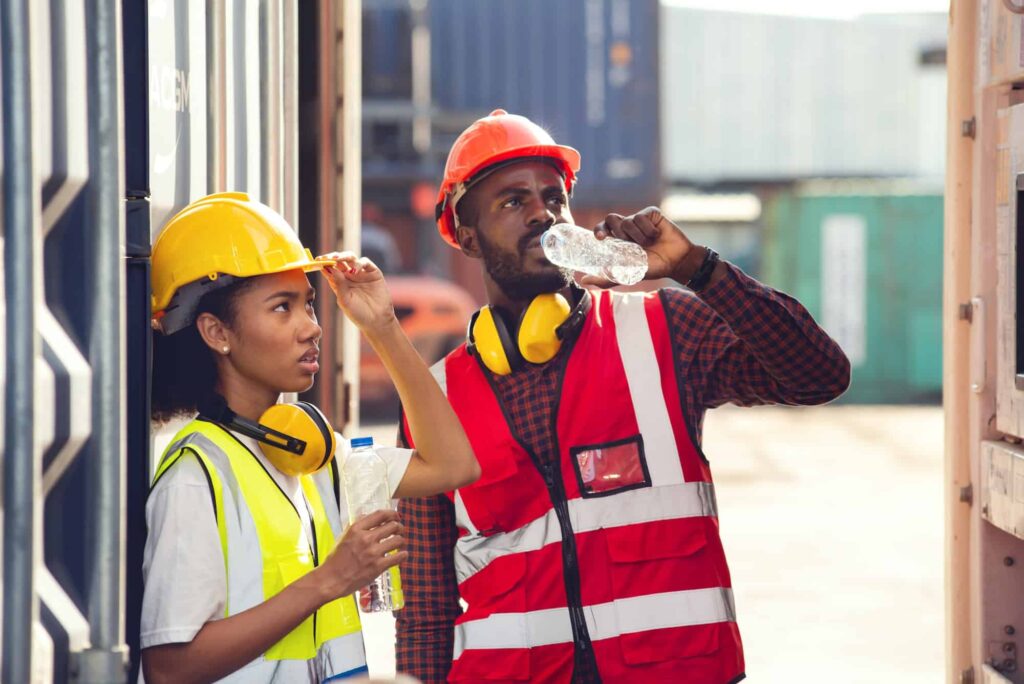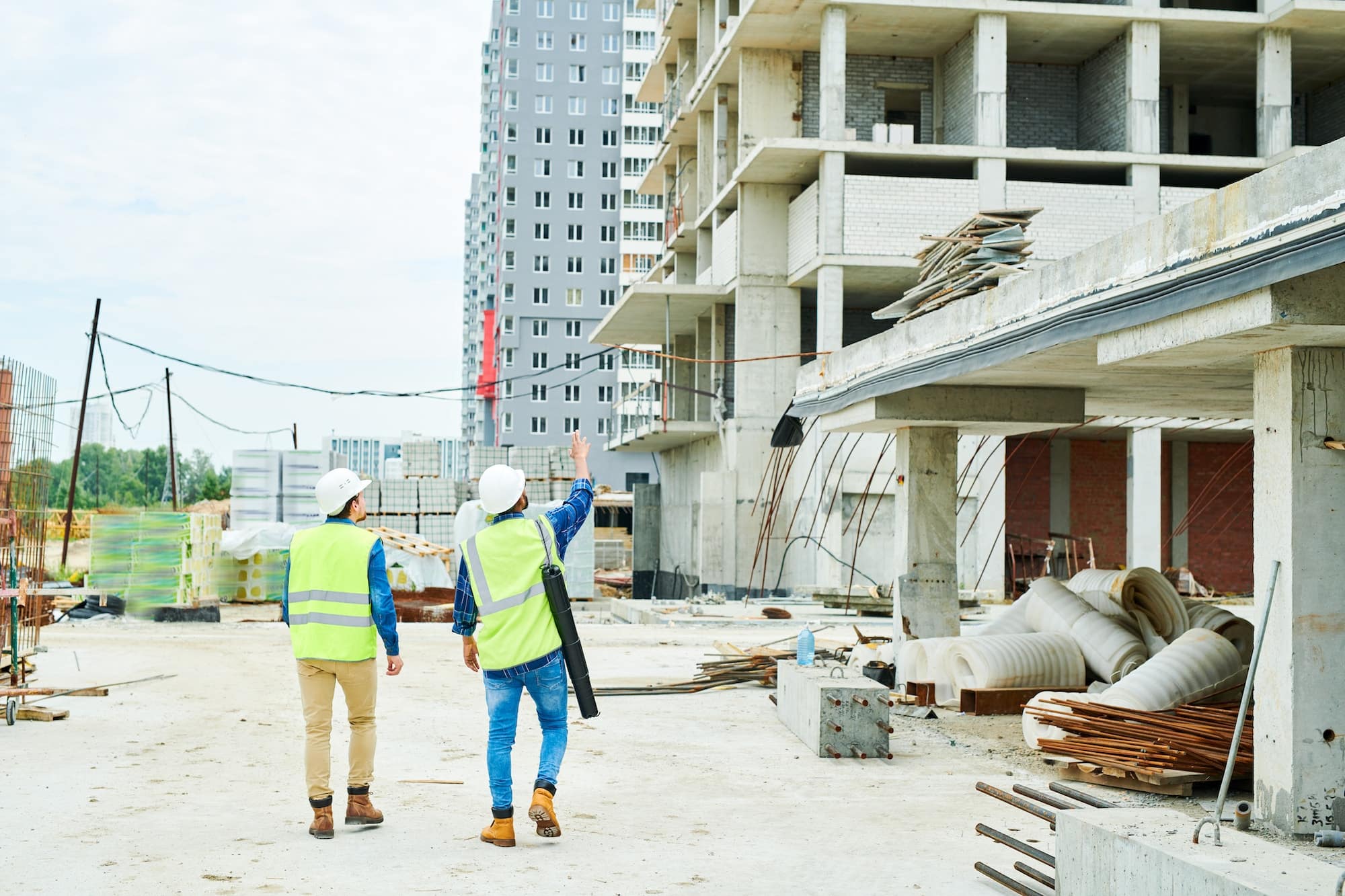In construction, challenges posed by extreme temperatures and fluctuating environmental conditions are a major concern. Temperature-sensitive building materials must retain their structural integrity, and items like laminate flooring, for example, can be impacted by relative humidity. More importantly, safeguarding workers against heat exhaustion and stroke is absolutely crucial on any job site. Monitoring environmental temperature helps avoid costly delays, health risks and liability.
The construction industry is familiar with data loggers: electronic devices equipped with sensors designed to monitor and record environmental conditions over time. These data-logger devices simplify the temperature and humidity reading process, which was all conducted manually years ago. In decades past, construction employees would carry around a clipboard and take readings at various times throughout the day. Fortunately, temp and humidity data logger devices make this much easier.
An exciting evolution in this technology is now providing practical benefits that can save time, money, and even lives in the construction industry. Enter wireless data loggers: innovative devices that monitor and record temperature and humidity data in real time and send automated alerts based on specific thresholds.
How Do Wireless Data Loggers Work?
Wireless temperature data loggers are particularly vital in industries where temperature control is critical, from pharmaceuticals to food storage. In the construction industry, data loggers can monitor temperature and humidity levels, ensuring materials are stored in optimal conditions and providing critical data for safety and quality control.
Modern data loggers, like those developed by CORIS Monitoring, utilize advanced technology to offer robust monitoring solutions. Here’s a breakdown of how they work:
Sensor Integration
Data loggers are equipped with various sensors tailored to specific needs. For example, CORIS battery-powered temperature sensors can monitor environments ranging from -40°F to +165°F, making them ideal for construction scenarios in any climate.
Wireless Communication
These sensors transmit data wirelessly to a central device known as a gateway. Unlike traditional Wi-Fi or Bluetooth, CORIS data loggers use LoRaWAN (Long Range Wide Area Network). This low-frequency wireless technology ensures signals can penetrate multiple walls and floors within buildings. This feature is particularly useful in construction sites, where concrete and other structural materials may interfere with standard wireless signals.
Cloud-Based Data Storage
Once the data reaches the gateway, it’s forwarded to cloud servers—such as those hosted on the Google Cloud. Here, the data is permanently stored and analyzed in real-time, providing instant alerts if temperature or humidity readings go beyond preset thresholds.
Alert Systems
If a monitored parameter, such as temperature, exceeds its safe range, the system sends alerts via text message, email or phone call. This immediate notification system allows construction managers to address potential issues at once, preventing damage to materials and ensuring worker safety.
Data Retention and Analysis
All data collected by these sensors is stored indefinitely. This feature is crucial for industries like construction, where historical data can help resolve disputes or confirm that environmental conditions were maintained within specified limits.

Benefits of Using Wireless Temperature Data Loggers in Construction
The beauty of wireless data logging is that the devices can be placed anywhere on a construction site and can record ambient temperature and humidity indoors or outdoors. These consistent readings produce a continual record that can be accessed at any time.
Many construction crews know the challenge of having to rely on Wi-Fi on every floor of their job site to download readings. With LoRaWAN battery-operated sensors, you can place a few strategically located sensors on every floor to monitor the temperature in each area. The wireless signals from these devices can penetrate concrete, rebar, cinder block and other building materials to maintain accurate and consistent records of environmental conditions.
Here are a few key benefits of wireless data logger systems for temperature and humidity in construction:
Enhanced Safety:
Monitoring ambient temperatures and relative humidity on construction sites helps prevent heat-related illnesses among workers. By setting thresholds for temperatures and humidity levels, data loggers can send alerts when conditions become dangerous, enabling quick action to safeguard health.
Quality Assurance
Many construction materials, such as laminates, wood and certain adhesives, are sensitive to temperature and humidity fluctuations. Data loggers ensure these materials are stored under optimal conditions, maintaining their integrity and performance. This monitoring helps avoid costly replacements and repairs, as seen in real-world examples of construction projects where data logging prevented million-dollar liabilities.
Regulatory Compliance
Construction companies are often required to maintain specific environmental conditions to comply with safety and quality standards. Data loggers provide continuous, verifiable records that can be used to demonstrate compliance during audits or inspections. This data cannot be modified, which complies with government regulations.
Cost Savings
By preventing damage to materials and reducing the risk of worker injury, data loggers help construction companies save money. Additionally, having accurate historical data can protect against legal claims, further reducing potential expenses.
Time Savings
With wireless data loggers, readings are stored and transmitted in just a few minutes to tablets and computers. This saves construction companies an average of 20 hours per week compared to manually downloading stored readings by USB from each data logger and then consolidating it.
Data Loggers’ Role in Organizational Procedure
The data logger humidity/temperature readings will provide construction teams with the necessary information, but the heart of the system is alerts, which will then prompt action from designated managers and teams. CORIS’ 24-hour temperature monitoring system features alert escalation settings, and the team works with users to fine-tune when, how and to whom alerts are received based on factors that are most applicable to your projects and environments.
The benefit of these alerts is to help construction companies develop a procedure for when they lose power, for example, or when temperatures reach unsafe levels. Users can set landline, text, cellular call and/or email notifications for vital alerts and determine which users are notified based on their assigned roles in the system. From there, teams can pinpoint who is responsible for addressing any issues and what action needs to be taken.
Access Temperature and Humidity Data When You Need It Most
Wireless data loggers are transforming how the construction industry manages and monitors environmental conditions. By providing real-time monitoring, instant alerts, and permanent data storage, these devices not only enhance safety and quality but also help avoid costly delays, material damage or liability. As construction projects become more complex and the materials used are more specialized, the importance of precise environmental monitoring only grows, making data loggers an essential tool for modern construction management.
Experience the future of construction site safety with CORIS Monitoring’s wireless temperature sensors and monitoring solutions. Our cutting-edge data loggers operate independently, providing you with real-time data on job site conditions. Easily configured to meet your specific needs, these data loggers offer seamless integration into your existing safety protocols. Don’t miss out on the opportunity to enhance your job site safety with innovative technology.
Contact us today and see firsthand how our wireless temperature sensors can transform your construction site safety management.





